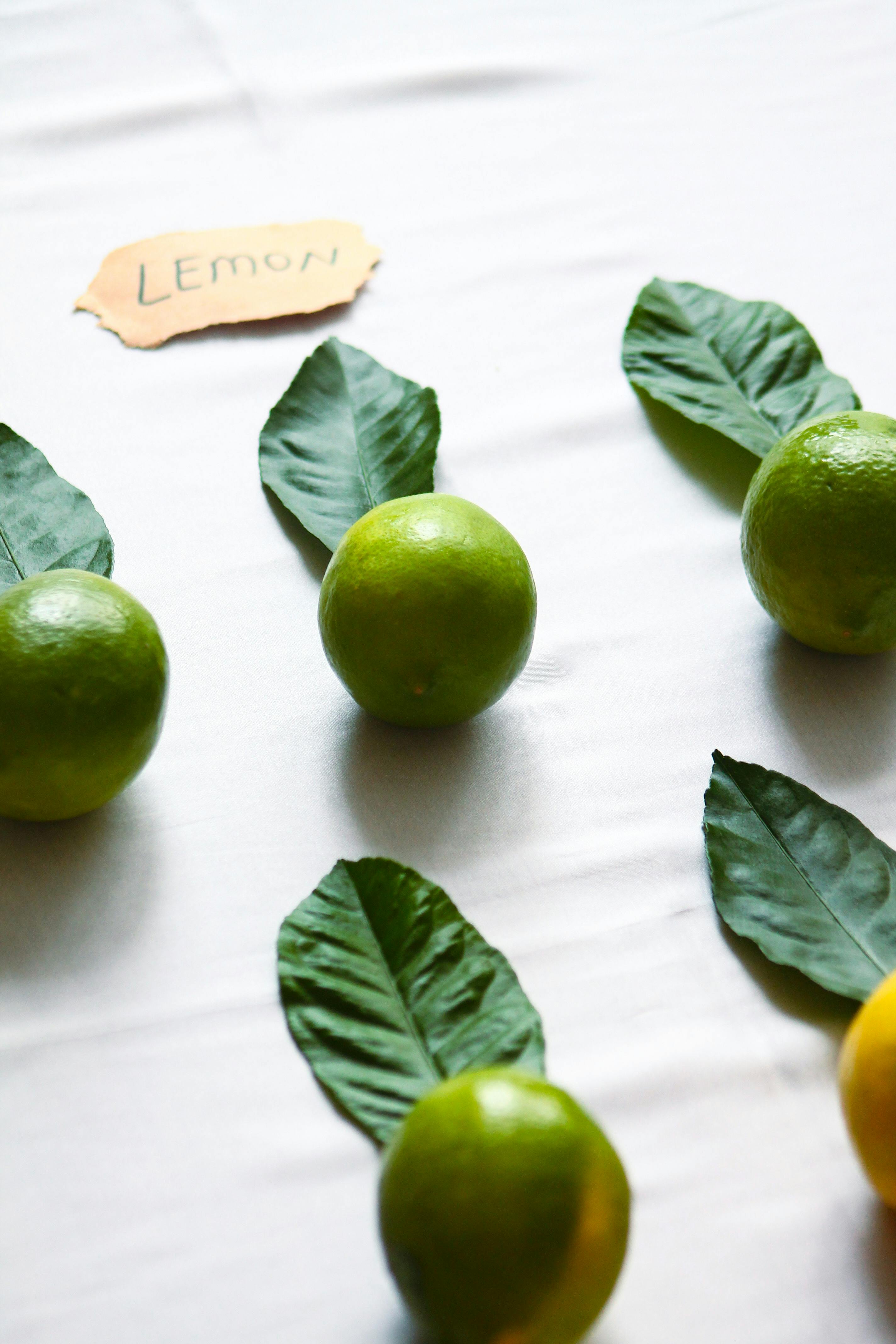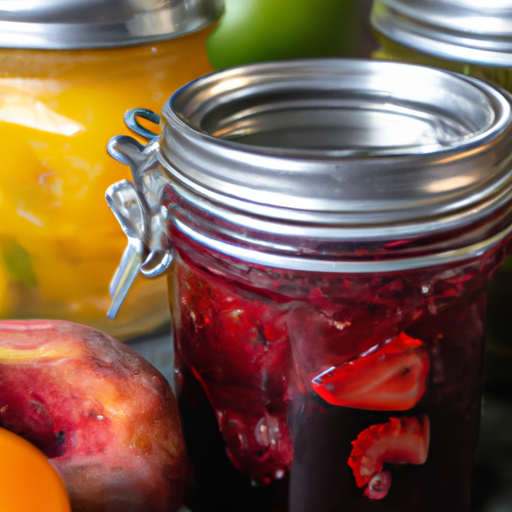Indulge in the delightful world of homemade jams and preserves, where every spoonful bursts with the sweet flavors of tradition and craftsmanship. At Tastepan.com, we bring you a treasure trove of mouthwatering recipes to explore, and few things embody the essence of homemade goodness quite like a jar of jam. From tangy citrus marmalades to luscious berry spreads, our step-by-step instructions and expert tips will guide you in creating these delectable treats. Whether you are a seasoned canning enthusiast or a curious novice, join us on this journey as we uncover the secrets behind the age-old art of making homemade jams and preserves.

History of Jam and Preserve Making
Early History
The history of jam and preserve making can be traced back to ancient times. The practice of preserving fruits and berries has been around for centuries as a way to extend the shelf life of these perishable foods. The ancient Greeks and Romans were known to preserve fruits by cooking them with honey, which acted as a natural preservative. This early method of preserving fruits laid the foundation for what we now know as jam and preserves.
Rise in Popularity
In the Middle Ages, preserves became popular throughout Europe, especially among the upper class. The discovery of sugar as a sweetener and preservative in the 16th century further fueled the popularity of jams and preserves. The demand for these sweet spreads grew rapidly, and soon they became a staple in households across the continent.
Traditional Methods
Traditional methods of making jam and preserves involved cooking fruits or berries with sugar over low heat until they thickened and reached the desired consistency. This slow-cooking process allowed the natural flavors of the fruits to intensify and develop. The use of sugar acted as both a preservative and a sweetener, providing the perfect balance of taste and preservation.
Evolution of Recipes
Over time, the art of jam and preserve making has evolved and adapted to different culinary trends and tastes. From traditional recipes passed down through generations to modern twists on classic flavors, there is no shortage of options when it comes to making homemade jams and preserves. Today, recipes feature a wide range of fruits, flavors, and even savory ingredients, catering to a variety of palates.
Benefits of Homemade Jams and Preserves
Quality Control
One of the biggest advantages of making homemade jams and preserves is the ability to have complete control over the quality of the ingredients. When you make your own, you can choose the freshest and ripest fruits available, ensuring that your jams and preserves are bursting with natural flavors. You also have the freedom to adjust the sweetness and texture according to your preference.
Health Benefits
Homemade jams and preserves can be a healthier alternative to store-bought options. By making them at home, you can reduce or eliminate the amount of added sugars and preservatives that are often found in commercially produced varieties. Plus, you get the added benefit of consuming a higher concentration of vitamins, minerals, and antioxidants from the fresh fruits you use.
Cost-Effective
Making your own jams and preserves can be a cost-effective option, especially if you have access to a surplus of fresh fruits during harvest season. By buying fruits in bulk or picking them yourself, you can save money compared to purchasing pre-made jars from the store. Additionally, homemade jams and preserves make great gifts and can be a more affordable option for sharing the love with friends and family.
Customization
When you make your own jams and preserves, you have endless opportunities for customization. You can experiment with different fruit combinations, adding herbs or spices to create unique flavor profiles. Whether you prefer a classic strawberry jam or want to try something more adventurous like a raspberry lavender preserve, the choice is yours. Homemade jams and preserves allow you to unleash your creativity and tailor the flavors to your liking.

Popular Types of Homemade Jams
Strawberry Jam
Strawberry jam is a classic favorite loved by many. The vibrant red color and sweet flavor make it a versatile spread that can be enjoyed on toast, scones, or even paired with cheese. Strawberries are naturally rich in pectin, which makes them a perfect fruit for jam making. The chunky texture and burst of strawberry goodness in every spoonful make this jam a delightful treat for breakfast or any time of the day.
Raspberry Jam
Raspberry jam is a tangy and slightly tart treat that adds a burst of flavor to any dish. The intense flavor and vibrant color of ripe raspberries make for a visually appealing jam. Whether you prefer a smoother consistency or enjoy a bit of texture with the seeds, raspberry jam is a delightful addition to a slice of toast, a dollop on a scone, or as a filling in a homemade pastry.
Blueberry Jam
Blueberry jam is a luscious and fruity spread that captures the essence of ripe blueberries. Known for their antioxidant properties and health benefits, blueberries make a nutritious and delicious base for jam. The deep purplish-blue color and burst of blueberry flavor make this jam a delightful addition to any breakfast or dessert. Spread it on your favorite bread or use it as a topping for yogurt or ice cream.
Apricot Jam
Apricot jam is a golden-hued spread with a sweet and slightly tart taste. Apricots bring a unique flavor profile to jams, with hints of citrus and floral notes. This jam pairs beautifully with both sweet and savory dishes. Use it as a glaze for roasted meats, spread it on a warm croissant, or swirl it into your morning oatmeal for a burst of sunshine in every bite.
Peach Jam
Peach jam is a summertime favorite bursting with the sweet and juicy flavors of ripe peaches. The golden color and delightful aroma make this jam a treat for the senses. Spread it on toast, use it as a filling in pies, or swirl it into yogurt for a taste of summer all year round. The natural sweetness of peaches combined with the tartness of lemon juice creates a perfect balance of flavors in this homemade jam.
Choosing the Right Fruit
Fresh vs. Frozen
When it comes to making homemade jams, choosing the right fruit is essential. Fresh fruits are often the preferred choice as they provide the best flavor and texture. However, frozen fruits can also be used, especially when the desired fruit is out of season. Frozen fruits are picked at their peak ripeness and flash-frozen, preserving their natural goodness. Just be sure to thaw the fruit before using it in your jam-making process.
Organic and Locally Sourced
Opting for organic and locally sourced fruits is a great way to ensure that you are using high-quality ingredients in your homemade jams. Organic fruits are grown without the use of synthetic fertilizers and pesticides, making them a healthier choice for you and the environment. Locally sourced fruits are often fresher, as they don’t have to travel long distances to reach your kitchen. Supporting local farmers also helps sustain the community and promotes sustainable agriculture.
Ripe and Flavorful
When choosing fruits for your homemade jams, it’s important to select ones that are ripe and flavorful. Ripe fruits are sweeter and have a more intense flavor, resulting in a jam that is bursting with natural goodness. Look for fruits that are vibrant in color, slightly soft to the touch, and have a fragrant aroma. By using ripe fruits, you ensure that your homemade jams have the best possible taste and texture.

Essential Ingredients and Tools
Fruit
The star ingredient in homemade jams is, of course, the fruit itself. Whether you prefer strawberries, raspberries, or any other fruit, choose the freshest and ripest ones available. Use a combination of both sweet and tart fruits to create a well-balanced flavor in your jams.
Sugar
Sugar acts as a preservative and sweetener in jam making. To achieve the proper consistency and taste, use granulated sugar or a combination of granulated sugar and honey. The amount of sugar required may vary depending on the level of sweetness in the fruits you are using and personal preference.
Pectin
Pectin is a natural thickening agent found in fruits. It helps the jam set and achieve a desired consistency. Some fruits naturally contain high levels of pectin, while others may require additional pectin to reach the desired thickness. Pectin can be purchased in powdered or liquid form, and the instructions on the packaging will guide you on the appropriate amount to use.
Acidity Enhancers
Adding acidity enhancers, such as lemon juice or citric acid, is crucial for proper jam making. Acidity helps with the preservation process and enhances the overall flavor of the jam. The acidity level in fruits varies, so it’s important to measure and adjust accordingly to ensure a safe and delicious final product.
Jam Jars
Choosing the right jars for storing your homemade jams is essential for maintaining freshness and extending shelf life. Use glass jars with airtight lids that allow for ease of opening and closing. Ensure that the jars are thoroughly washed and sterilized before filling them with the hot jam.
Canning Equipment
To properly seal your homemade jams, you will need canning equipment such as a water bath canner or pressure canner. These tools ensure that the jars are properly sealed and can be safely stored at room temperature for an extended period. Follow the specific instructions for your chosen canning method to ensure the preservation of your delicious jams.
Step-by-Step Jam Making Process
Preparing the Fruit
Start by washing the fruits thoroughly and removing any stems, pits, or hulls. Depending on the type of fruit, you may need to peel or chop them into smaller pieces. For berries, you can simply crush them slightly to release their natural juices. Measure the desired quantity of prepared fruit for your recipe, keeping in mind that the fruit will cook down and reduce in volume.
Cooking the Jam
In a large, heavy-bottomed pot, combine the prepared fruit, sugar, pectin, and any additional ingredients such as lemon juice or spices. Slowly bring the mixture to a boil, stirring continuously to avoid scorching. Reduce the heat and simmer the jam until it reaches the desired consistency, typically around 20-30 minutes. Skim off any foam that forms on the surface during the cooking process.
Testing for Proper Consistency
To test if the jam has reached the proper consistency, place a small spoonful of the hot mixture onto a cold plate and let it cool for a few seconds. Gently push the jam with your finger; if it wrinkles and holds its shape, it is ready. If the jam is still runny, continue cooking for a few more minutes and repeat the test until the desired consistency is achieved.
Canning and Sealing
While the jam is still hot, carefully ladle it into sterilized jars, leaving a small headspace at the top to allow for expansion during sealing. Wipe the rims of the jars clean to ensure a proper seal, then place the lids on tightly. Process the jars in a water bath canner or pressure canner according to the specific instructions for your chosen method. Once processed, remove the jars from the water bath and let them cool completely. The lids should become concave, indicating a successful seal.
Common Mistakes to Avoid
Adding Too Much Sugar
While sugar is a crucial ingredient in jam making, adding too much can overpower the natural flavors of the fruit. It’s important to follow the recipe’s recommended sugar-to-fruit ratio or use a low-sugar or no-sugar pectin alternative if desired. Remember, you can always adjust the sweetness to your taste preference, but adding too much sugar can result in a cloyingly sweet jam.
Overcooking the Jam
Overcooking the jam can lead to a thick and sticky consistency that is difficult to spread. It’s important to watch the jam closely and follow the recipe’s recommended cooking time. Be patient and allow the jam to simmer gently until it reaches the proper consistency. It’s better to slightly undercook the jam and have a softer texture than to overcook it and end up with a dense and overly thick spread.
Not Sterilizing Jars
Properly sterilizing the jars before filling them with your homemade jam is crucial for preventing bacterial growth and ensuring a longer shelf life. Thoroughly wash the jars and lids in hot, soapy water, then rinse them well. Alternatively, you can sterilize them by placing them in a preheated oven at 350°F (175°C) for about 10 minutes. Always fill the hot jam into hot jars to maintain sterility.
Using Underripe Fruit
Using underripe or unripe fruit can result in a jam that lacks flavor and fails to reach the desired consistency. It’s important to choose fruit that is at its peak ripeness for the best results. Ripe fruits have a higher sugar content, which provides a more intense flavor and aids in setting the jam. If using slightly underripe fruit, consider adding a small amount of commercially available pectin to assist with jam setting.
Storing and Shelf Life
Proper Storage Techniques
To ensure the longevity of your homemade jams, proper storage techniques are essential. After the jars have cooled completely, check the seal by pressing down on the center of the lid; it should not move or make a popping sound. Label the jars with the name and date of the jam and store them in a cool, dark place away from direct sunlight and heat sources.
Refrigeration vs. Room Temperature
Properly sealed homemade jams can be stored at room temperature, but they will last longer if refrigerated. Refrigeration helps maintain the freshness and quality of the jam, especially after opening. If you prefer to store your jams at room temperature, ensure that they are properly sealed, the lids are concave, and there are no signs of spoilage or fermentation.
Average Shelf Life
When stored correctly, homemade jams can last up to one year or more. However, the flavor, color, and texture of the jam may change over time. It’s best to consume the jam within six months for optimal taste and quality. Always check for any signs of spoilage, such as mold growth, fermentation, or off odors, before consuming.
Creative Ways to Use Homemade Jams
Spread on Toast or Pancakes
One of the most popular and classic ways to enjoy homemade jams is by spreading them on toast or pancakes. The sweet and fruity flavors complement the warm bread or fluffy pancakes, creating a delicious and comforting breakfast or snack.
Mix into Yogurt or Oatmeal
Add a spoonful of homemade jam to your yogurt or oatmeal to enhance the flavors and create a delightful contrast of textures. The fruity sweetness of the jam pairs perfectly with the creamy yogurt or the nutty goodness of oats, elevating your breakfast or midday snack.
Dollop on Ice Cream or Cheesecake
For a simple yet satisfying dessert, top your favorite ice cream or slice of cheesecake with a dollop of homemade jam. The rich and creamy textures of the desserts combined with the fruity burst of the jam create a decadent treat that will impress your taste buds.
Use as Cake Filling or Topping
Homemade jams make excellent fillings for cakes and cupcakes, providing a burst of flavor and moisture. Spread a layer of your favorite jam between cake layers or swirl it into the batter before baking for a delicious surprise. You can also drizzle a spoonful of jam on top of frosted cakes for an elegant and fruity finishing touch.
Gifts and Party Favors
Homemade jams make heartfelt gifts and party favors for special occasions. Fill small jars with your favorite flavors, personalize them with labels or ribbons, and share the love with family, friends, and guests. They make for thoughtful and delicious gifts that everyone will appreciate.
Conclusion
The art of making homemade jams and preserves is a sweet tradition that has stood the test of time. From ancient methods of preserving fruits with honey to modern recipes featuring a wide range of flavors, homemade jams continue to bring joy to breakfast tables and dessert spreads all over the world. By making your own jams and preserves, you have the freedom to control the quality of ingredients, customize flavors, and indulge in the goodness of fresh fruits. So why not embark on a jam-making adventure and create your own delicious concoctions? From classic strawberry to exotic lavender raspberry, the possibilities are as endless as your imagination. Let the sweet tradition of homemade jams and preserves brighten your kitchen and delight your taste buds. Happy jam making!

